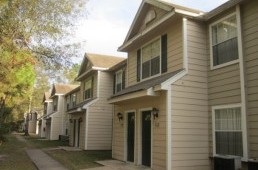
September 23, 2016 | by Michael Wilt
Categories: Affordable Housing, Construction, Rental Housing
Recent data leaves little doubt that Texas faces a shortage of affordable housing. The National Low Income Housing Coalition estimates the state needs 595,231 more units of housing that is affordable to renters earning up to 30% of the area median income.
The primary source of funding for affordable multifamily developments in Texas comes from the Low-Income Housing Tax Credit program, administered by the Texas Department of Housing and Community Affairs. In 2015, the program financed 7,391 units of new construction in Texas according to the 2016 State Low Income Housing Plan. That's a sizeable amount but only puts a dent in the overall need.
So while building new affordable units is important, renovating and preserving existing affordable units can be just as important to ensure the number of affordable housing units does not continue to go down. Affordable units that aren't preserved are often torn down or turned into market rate developments. That causes displacement of tenants and makes the demand for affordable units even higher.
So why doesn’t preservation of affordable housing get more attention? There is a perception that preservation of housing is "not always as sexy as new construction," says Mark Treskon, a research associate at the Urban Institute, in an article about his "Anatomy of a Preservation Deal" research paper.
There's also an economic argument for preserving, as it's typically cheaper to rehabilitate a property than it is build a completely new one. Developers interested in taking the preservation route on a development should take note of the following lessons Treskon recounts in his research paper referenced above.
TSAHC and Preservation
TSAHC plays an important role in preserving affordable housing statewide. Since 2005, TSAHC has issued nearly $115 million in bonds through our Multifamily Tax-Exempt Bond Program to finance the preservation of 2,594 units across the state.
Alternatively, TSAHC provides short and long-term loans through the Texas Housing Impact Fund to build affordable housing. Acquisition and rehabilitation of affordable multifamily projects is an eligible activity under this program.
On the House blog posts are meant to provide general information on various housing-related issues, research and programs. We are not liable for any errors or inaccuracies in the information provided by blog sources. Furthermore, this blog is not legal advice and should not be used as a substitute for legal advice from a licensed professional attorney.
Given the finite federal funding that falls well short of serving affordable housing needs in Texas, it important that affordable housing preservation is funded through a process that strategically prioritizes where preservation opportunities are pursued. Areas with high opportunity characteristics, or experiencing positive change and new investment (i.e. gentrification) should be prioritized over areas where high concentrations of affordable housing, poverty, and low-performing schools exist, among other negative characteristics.
How do you think 4% LIHTCs, used in conjunction with private activity bonds (where there’s currently untapped capacity), could be better utilized to address the affordable housing shortage while also maintain good housing choices for those reliant on it?
TSAHC reviews all blog comments before they are posted to ensure a positive experience for our online community. Off-topic comments; hostile, derogatory or deliberately insulting comments; and comments specifically promoting goods and services will not be posted.
Approved comments will be published in their entirety. Personal information will not be removed unless it pertains to someone other than the person submitting the comment. For more information, please see our Comment Posting Guidelines.
To remove a previously submitted and published comment, please contact Anna Orendain at [email protected].
If you have a question regarding any of TSAHC's programs, please contact us.

Charlie,
Thanks for the comment. We agree that there’s a huge demand for more affordable housing and untapped potential in the private activity bond and 4% Low-Income Housing Tax Credit program financing structure. The bond and 4% model (bond/4%) has become more popular for affordable preservation due to low interest rates and complementary loan products through FHA, Fannie Mae and Freddie Mac. Additionally, because the bond/4% process is noncompetitive more time can be taken by a developer to plan and potentially target existing neighborhoods undergoing gentrification or where other redevelopment activity is occurring that might spur gentrification.
As you know the 9% Low-Income Housing Tax Credit program is highly competitive and many good projects go unfunded each year. The bond/4% model can be a good alternative for good projects that don’t receive 9% tax credits, however, the number of affordable units and potential for extremely low income units can be limited due borrowing costs and lesser value of the 4% tax credit.